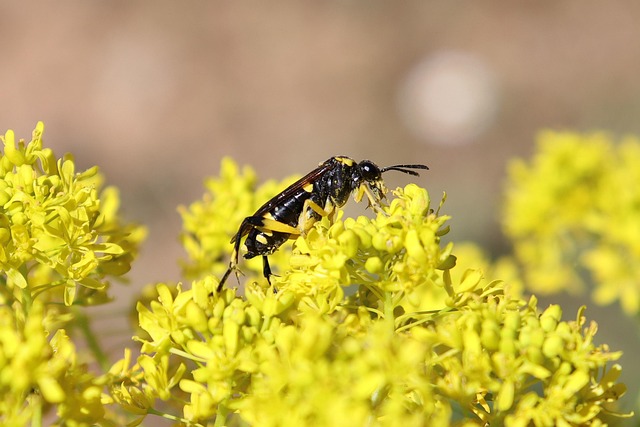For safe and effective eco-friendly yellow jacket control, natural ingredients like pyrethrum, neem oil, and spinosad offer rapid knockdown or insect growth disruption. Essential oils, herbs, and reflective surfaces create non-toxic deterrents. Physical removal of nests and prevention techniques like sealing entry points are crucial. DIY methods can be supplemented by professional pest control services for severe infestations, ensuring family and environmental safety while ridding outdoor spaces of yellow jackets.
Tired of dealing with pesky yellow jackets? Keep your kids and pets safe while eliminating these pests with eco-friendly methods. This comprehensive guide explores multiple strategies for controlling yellow jackets, focusing on child- and pet-safe techniques. From understanding eco-friendly pesticides to employing non-chemical deterrents and physical removal methods, we cover it all. Learn when and how to seek professional help, ensuring a safe and effective solution without harmful chemicals.
Understanding Eco-Friendly Pesticides for Yellow Jacket Control
When considering yellow jacket control, it’s essential to explore eco-friendly options that are both effective and safe for children and pets. Eco-friendly pesticides typically contain natural ingredients derived from plants or beneficial microorganisms, reducing potential harm to non-target species and the environment. These alternatives often avoid synthetic chemicals known for their toxicity and persistence in ecosystems.
Formulations such as pyrethrum, neem oil, and spinosad are examples of eco-friendly yellow jacket control agents. Pyrethrum, derived from chrysanthemum flowers, provides rapid knockdown of insects while being relatively non-toxic to mammals and birds. Neem oil, extracted from the neem tree, disrupts insect growth and reproduction without leaving harmful residues. Spinosad, produced by a beneficial bacterium, is highly effective against yellow jackets and other pests with minimal impact on non-target organisms.
Non-Chemical Deterrents and Repellents
Many homeowners prefer non-chemical methods for yellow jacket control, especially when there are children and pets in the household. Eco-friendly deterrents offer a safer alternative to traditional pesticides, aligning with the growing demand for sustainable pest management solutions. One effective approach is using essential oils known for their natural repellency against yellow jackets. Peppermint, lemongrass, and clove oil can be mixed with water and sprayed around entry points and nest locations to deter these insects without causing harm.
Another organic method involves the use of visual and scent barriers. Yellow jackets are sensitive to certain smells and visuals, so planting herbs like basil, lavender, or marigolds around your property can act as a natural deterrent. Additionally, reflecting surfaces like aluminum foil or shiny tapes can confuse yellow jackets, making them less likely to approach. These simple, non-toxic techniques empower individuals to take control of yellow jacket populations in an environmentally conscious manner.
Physical Removal and Prevention Techniques
Physical Removal and Prevention Techniques are essential for those looking to manage yellow jackets in an eco-friendly manner. When dealing with yellow jackets, it’s crucial to employ non-toxic methods that protect both children and pets. One effective approach is to identify and physically remove nests during the early morning or late evening when activity is minimal. Wearing protective gear, including gloves and long sleeves, a trained professional can carefully extract the nest, ensuring minimal disruption to the ecosystem.
Prevention is another key strategy for eco-friendly yellow jacket control. Sealing entry points around the home, such as gaps in windows and doors, can prevent yellow jackets from establishing nests indoors. Regularly cleaning outdoor dining areas and securing trash cans with tight-fitting lids reduces attractive food sources. Additionally, planting flowers and herbs known to repel yellow jackets, like lavender and marigolds, can create a natural barrier around your property.
Professional Help: When and How to Seek It
If yellow jackets have taken over your outdoor space, despite your best efforts at prevention, it might be time to consider professional help. While DIY methods can be effective for minor infestations, severe cases or large colonies require specialized knowledge and equipment. Professional pest control services offer eco-friendly yellow jacket control options that are safe for children and pets, using minimal toxic chemicals.
Seeking professional assistance is especially crucial when yellow jackets have built nests in hard-to-reach areas, like tall trees or under eaves. Experts can identify the type of yellow jacket and recommend the most suitable control method, ensuring the safety of your family and the environment while effectively eliminating the pest problem.
When dealing with yellow jackets, prioritizing child- and pet-safe methods is essential. Eco-friendly pesticides offer a responsible solution, minimizing harm while effectively managing these pests. Non-chemical deterrents and physical removal techniques provide additional layers of protection. By understanding these diverse approaches, you can create a safer environment for your family and pets while keeping yellow jackets at bay. If the infestation persists or worsens, seeking professional help ensures a thorough and safe resolution. Embrace these strategies for a more sustainable and secure living space.
